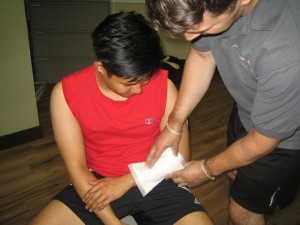In any surgical procedure, there will always be an incision site or scar site to be taken care of at home. Always remember that how the surgical scar was taken care of can mean the difference between proper healing and an undesirable scar formation. A surgical wound that is currently in the healing process that reopens or becomes infected will disrupt the healing and puts the individual at risk for a surgical scar. Always make sure that the surgical wound stays clean and properly sterilized while following the instructions given by the doctor for the ideal healing of the surgery scar. By enrolling in a first aid course, you will learn not only how to manage common types of wounds, but also surgical wounds.
http://youtu.be/Q0S6ihG1NFk
Steps on how to care for a surgical scar

- Always follow the instructions for the scar care given by the doctor after surgery. Depending on the location and circumstances of the surgery, the surgical scar care instructions tend to vary from one individual to another including the intake of oral antibiotics and application of creams. The doctor will provide written instructions so that the individual can perform them properly at home.
- You have to clean the scar on a daily basis. Always make sure that you will not scrub or rub the scar. All you have to do when cleaning is to create a good lather using an antibacterial soap and then pat the suds over the scar. Leave the lather on for 15-20 seconds and then thoroughly rinse the soap and pat the scar dry using a towel.
- The dressings must be changed as often as the doctor instructed. When changing the bandages, you have to wash your hand using antibacterial soap before touching the scar. Start by peeling away the old dressing while making sure that you are not removing the skin during the process. In case the skin tags along with the dressing, wet the bandage and try again. Once the old dressing is removed, apply a clean dressing and tape it over using medical tape.
- If recommended by the doctor, you can apply an ointment. Even though the antibiotic ointment can help prevent the development of infection, it can slow down the healing process. In case the individual needs one, the doctor will likely prescribe one and explain how and when it will be used.
Important considerations to bear in mind
You have to consult a doctor if you notice any signs of infection. Always remember that the infection can quickly spread and hinder the healing process. The signs of infection include pain, redness, swelling and yellowish discharge. It is important to consult a doctor if the incision opens as well. This would require re-stitching or stapled again in order to close the wound for better healing as well as reduce the chances of obvious scarring.
